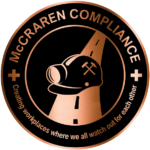How should employers approach training and education around eye/face protection to improve adoption and reduce risk?

Responding is Kyle Anderson, group manager of product marketing, Milwaukee Tool, Niles, IL.
In high-risk workplaces, eye and face protection isn’t just a recommendation; it’s a critical safeguard against serious and potentially life-altering injuries.
Despite the availability of advanced protective gear, adoption remains inconsistent, often because of gaps in education, discomfort or lack of awareness.
Eye injuries continue to rank among the most common workplace incidents and are often preventable. This disconnect reveals a deeper issue: Simply issuing protective equipment isn’t enough. To truly reduce risk and improve compliance, organizations must rethink how they approach safety training. That means moving beyond one-time briefings and embracing ongoing, engaging education that empowers workers to understand, trust and consistently use their gear.
But safety is more than compliance; it’s personal. It’s about making sure every employee gets home safe to their loved ones. Workers are more likely to adopt safe behaviors when they understand the risks and the reasons behind protective practices. A strong safety culture starts with knowledge, but it thrives when workers feel that their employer cares about their well-being.
By investing in thoughtful, human-centered safety education, organizations not only can reduce incidents but build trust, boost morale and reinforce a shared commitment to protecting what matters most.
Focused education for eye and face safety
Training around eye and face protection is most effective when it reflects the specific tasks and environments workers encounter. General safety education may not always provide the level of detail needed to address the unique risks to vision and facial safety across different roles and settings. The risks to vision can vary widely depending on the nature of the work, whether it’s exposure to airborne particles, chemical splashes or intense light. When education around protective equipment is framed in the context of these everyday hazards, it becomes more relevant and memorable. Incorporating examples, demonstrations and discussions that highlight how eye and face injuries occur – and how they can be prevented – helps reinforce the value of protection in a way that resonates with workers across roles.
Prioritize fit and comfort
Factors such as discomfort, inadequate fit and limited design adaptability can influence the consistent use of eye and face protection, highlighting the need for well-designed personal protective equipment. To address these considerations, features such as adjustable temples, flexible nose bridges and varied frame styles help accommodate different face shapes and preferences, contributing to a more secure and comfortable fit. When protective gear feels unobtrusive and tailored to the individual, it becomes easier to integrate into daily routines.
Beyond fit and comfort, practical concerns such as lens fogging, scratching and wear over time can also affect long-term use. Technological advancements, including anti-fog coating and scratch-resistant coatings, have helped address these issues, improving both durability and user satisfaction.
Ongoing education
Ongoing education and awareness are important components of effective workplace safety programs, particularly when it comes to eye and face protection. Staying current with advancements in protective equipment and safety practices allows organizations to make informed choices that support worker well-being. Incorporating high-quality PPE and maintaining clear, consistent safety protocols contribute to environments where protection is both accessible and expected, helping to reduce risk and support productivity over time.
Conclusion
Safety isn’t just about compliance – it’s about empowering workers with the knowledge, confidence and comfort to make safety a daily habit. When training is done right, it helps normalize the use of eye and face protection, fostering a safer and more consistent workplace environment.
McCraren Compliance offers many opportunities in safety training to help circumvent accidents. Please take a moment to visit our calendar of classes to see what we can do to help your safety measures from training to consulting.
Original article published by Safety+Health an NSC publication


